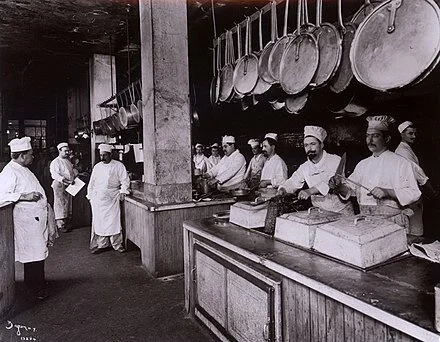“There’s many a king on a gilded throne
But there’s only one king on an ice‐cream cone.
So we crown him today with friendly acclaim,
All over the country we’ll blazen his name.
With hot dogs barking in approbation,
He’s the man who believes he can feed the nation.”
n Howard Johnson’s (1940)
Like many like‐minded entrepreneurs, his dream was built on a simple idea with blazing clarity: “I figured that America really preferred good food nicely served,” and if it was made “as attractive as I knew how, easy to look at and hard to forget,” it would surely be successful, reasoned the founder of the eponymous restaurant, Howard Johnson, during The Great Depression.
Johnson, raised in Quincy, did indeed feed the nation and helped create the modern hospitality industry. But as widely reported just before Labor Day weekend, just one restaurant, in Lake George, N.Y., now bears the name “Howard Johnson’s. ‘’
With a prologue set firmly in New England, the spectacular rise and fall of this cultural icon is a quintessentially American story; it represents brilliantly the paradox of the creative destruction in democratic capitalism — in which the outdated is constantly replaced by new and better products and, ultimately, new and better processes. And with a delicious irony — being the very purveyors of disposable consumerism they helped to create — the epilogue also reflects today’s Baby Boomers’ sentimental nostalgia about a past they helped destroy, itself a gorgeous paradox of cultural progress.
But what a story it was. Much of it is recalled in his wonderfully reverential book, A History of Howard Johnson’s: How a Massachusetts Soda Fountain Became an American Icon, by Anthony Mitchell Sammarco.
It began as a store in Wollaston, Mass., in 1926. In the 1950s he pioneered efforts at freezing complete meals, which became staples in supermarkets. By 1969, at its corporate peak and prestige, a new restaurant was opening every nine days and a lodge every two weeks.
So large was this conglomerate that by 1975 the company had grown to 929 Howard Johnson’s restaurants, 32 Red Coach Grill restaurants, 63 Ground Round restaurants, and 536 motor lodges in 42 states, Puerto Rico and Canada. Successful entrepreneurs rely upon risk and luck and Johnson had a hunch. He rightly thought that Americans would be mobile with the advent of the automobile and with the creation of the Interstate Highway System (after the Great Depression and after World War II) they would be hungry too. And eventually tired.
As Sammarco notes, the “phenomenal growth” of Howard Johnson’s was “based on the application of two relatively new and untried concepts.” Johnson pioneered the retail franchise (where others bore start‐up costs) and also standardized the operations (branding, menus, décor). Howard Johnson’s restaurants and motor lodges became familiar terrain on roads from Maine to Florida and points west, such as the Pennsylvania Turnpike.
In many respects, Johnson nationalized New England. While the fried clam had been on Boston’s Parker House (hotel) menu beginning in 1865, Johnson introduced the fried clam strip (known as the “Tendersweet”) to America in 1951. Later, chef Jacques Pepin was brought in to prefect New England clam chowder. And, Sammarco writes, Johnson’s colonial‐style motor lodges “were attractive to nostalgic Americans,” and the architectural style was from a “melting pot of New England style that triggered the ‘old‐fashioned comfort’” with Americans.
But in the 1970s America experienced economic discontentment and dislocation because of its first great energy crisis and inflation. Travelers were driving less and flying more. Fast food chains such as McDonald’s and up‐scale hotels such as Marriott perfected the business model that Johnson had begun 40 years before. Many in the public came to see Howard Johnson’s as “dated” and “old‐fashioned” and its traditions uncool.
The bulk of the company was sold to a British conglomerate, Imperial Group Limited, in 1979.
Still, the story of Howard Johnson’s captures the rapid cultural changes of 20th‐Century America that continue to reverberate today. For many Boomers, their collective memory of “HoJo’s” is best remembered in faded family photographs taken over the years in the same rest stops along America’s highways and byways or Polaroids taken at the same restaurant for a sundae after a game or postcards sold in the lobbies of the same motor lodges during the ‘50s, ‘60s and ‘70s. It was a shared experience for which today’s generation can barely comprehend.
Today, for Millennials, there is no station wagon, no family road trip, no journey, no picture, no place like Howard Johnson’s; their idea of permanence and remembrance is a digital image “selfie” that disappears in 10 seconds on Snapchat.
Soon, service will mean a meal delivered by drone.
At the intersection of Routes 6A and 28 in Orleans still stands the structure that housed the first franchised Howard Johnson’s, in 1935 (about 25 miles from where the Pilgrims ate their first meal in the New World, in 1620). Since it was sold in 1979, it has changed names four times. Today it is painted in neutral browns and beiges. It looked and felt much better with the distinctive orange roof and turquoise blue shutters and 28 flavors, during an era that is by-gone, but not forgotten.
James P. Freeman, a New England essayist, is a former Cape Cod Times columnist and was formerly in the financial-services industry. This piece first ran in The New Boston Post.















